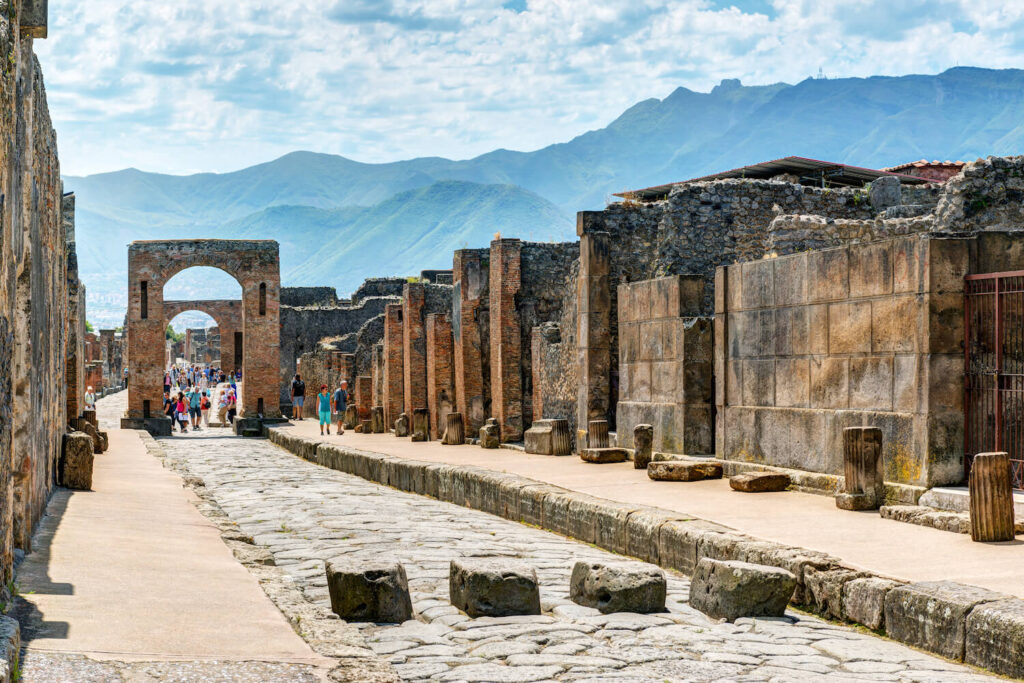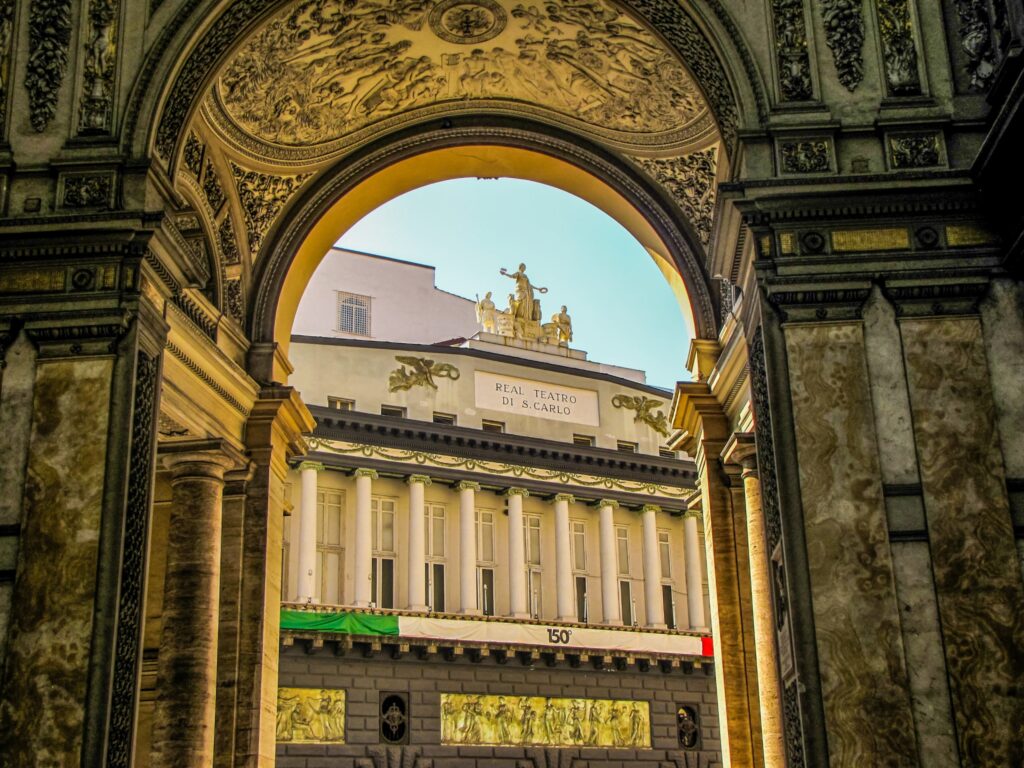Vesuvius sits 5.5 miles east southeast of Naples and about 5 miles north west of Pompeii. The last time Vesuvius erupted was 1944. Today, 4 million people live in the shadow of the volcano. There are evacuation contingency plans in place, however the logistics are daunting.

The volcano was formed when the Eurasian and African tectonic plates collided. It is one of several volcanos that shaped the Italian peninsula. The geophysics of Vesuvius make it prone to explosive eruptions. 2200 lbs/second of ash, rock and gas could be spewed up to 12 miles into the atmosphere.

The famous 79 AD eruption and subsequent lava flow, which reach speeds of 100 mph, buried Pompeii in 20 feet of ash. Contemporaneous letters, written by Pliny the Younger, described the devastation. The ash preserved the minutiae of Roman life.
Major excavations began in the mid 18th century. Archeologists noticed that skeletons were surrounded by voids in the ash. Plaster of Paris was poured into the voids. The resulting plaster casts detail the final pose of the residents of Pompeii down to the folds in the clothes. The casts are quite eerie.
Pompeii was a upper class Roman resort town. It’s 20,000+ inhabitants catered to the rich upper classes. Prostitution establishments were conveniently spread throughout the city.

Despite being a modern Roman city it lacked a proper sewage system. Sewage ran through the streets. A pedestrian was required to use the sidewalks and the crossing stones. The crossing stones served as both an elevated pedestrian crossing and speed bumps for the wagons and chariots.

Since 1960, the work at Pompeii has continued at a slow and methodical pace. There have been improvements in the facilities however many of the artifacts are displayed at other museums throughout Italy. Over 4 million tourists visit Pompeii each year. There’s a high speed rail route from Rome and buses or trains come in from Naples. Though you can « do » Pompeii in 2.5 hours, I think it’s better if you don’t rush. If possible arrive at Pompeii first thing in the morning then head off to Vesuvius for a hike.

After visiting Pompeii, heading back to Naples was a bit surreal. Traveling from the ruins of a Roman resort of 79 AD to a overcrowded, ill maintained metropolis of 2024 was jarring. Visiting Naples is like visiting a hilly junkyard. You have to put up with clutter and detritus to find the gems.


There have been several urban improvement projects throughout Naples history. The Neapolitans are quite proud of the their restoration and rehabilitation of the Spanish Quarter. 40 years ago, this rat infested, drug ridden section of Naples was unsafe for residents and tourists. The streets are still crowded but the drugs and rats are gone. There are musicians, kiosks, cafes and restaurants. The turn around in the Spanish quarter coincided with the arrival of Diego Maradona.

Maradona was a spectacular soccer player. He grew up in a shantytown in the outskirts of Buenos Aires. The people of Naples, who suffered from poor sanitation, poverty and organized crime, immediately identified with Maradona. He lead the Napoli team to two regional titles, two runner up finishes and several other European championships. Even though he was a flawed savior, fighting cocaine addiction and paternity suits, the Neapolitans still revered him. His murals adorn the city and can be found on every street in the Spanish Quarter.


There are reminders of the grandeur of Naples in every district. Beautiful medieval church’s are adjacent to packed cobblestone streets. Many of the churches are resplendent, soaring ceilings adorned with frescos, mosaics and filigree.
The public buildings are also impressive. The Galleria Umberto, a giant shopping mall, build in the late 19th century, is similar to Milan’s Galleria Vittorio. It sits across from Teatro di San Carlo, an ornate 18th century Opera House.
The Piazza del Plebiscito, is the main square of Naples. Volcanic rock from Vesuvius was used in its construction. Two imposing edifices, the neoclassical Basilica of San Francesco di Paola is opposite the Royal Palace. Graffiti on the columns and vagrants sleeping on the portico basilica has graffiti are emblematic of the city.


Venus of the Rags, a sculpture by Michelangelo Pistoletto, was recently reinstalled in Piazza Municipio. The original sculpture was destroyed by arson. Frequently, the purpose of Modern art is to provoke thoughts or arouse feelings. The local government press release concerning the Venus:
Considered one of the most iconic works of the 20th century and one of the artist’s most emblematic, the ‘Venus of the Rags’ stages the contrast between the still beauty of the classical tradition and the transience of the contemporary.”
I didn’t appreciate or like the Venus of the Rags, especially in a public place. If it were tucked into a modern art museum, it would be much more intriguing.

One of the oldest structures in Naples, Castel dell’Ovo, is a 12th century Norman Castle. Recent archaeological findings have located a 2500 year old Greek port adjacent to the castle. The castle was built around a 5th century monastery. The monastery was adapted from a villa from the 1st century BC. Neopolitans have been remodeling and repurposing structures for long time.

My favorite site in the Royal district was Caffe Gambrinus. It wasn’t the architecture but the aroma. The Caffe makes the best sfogliatelle in Naples. More on the food of the Amalfi Coast in the next post.

